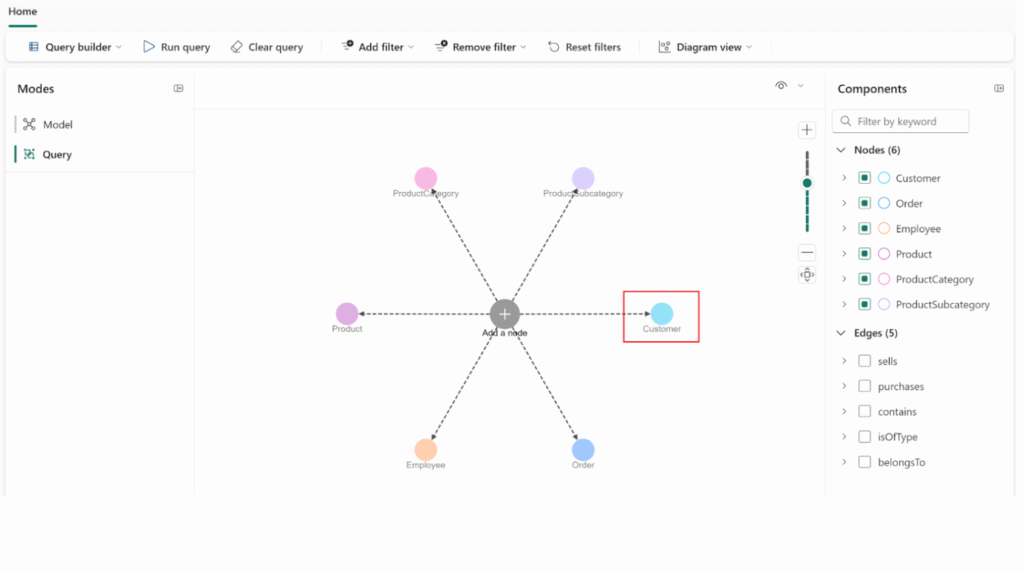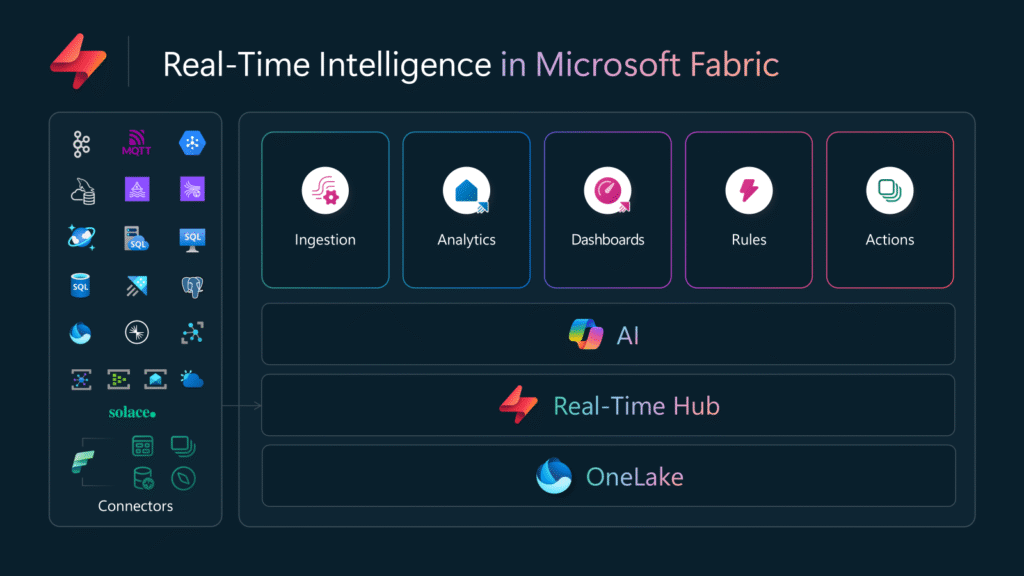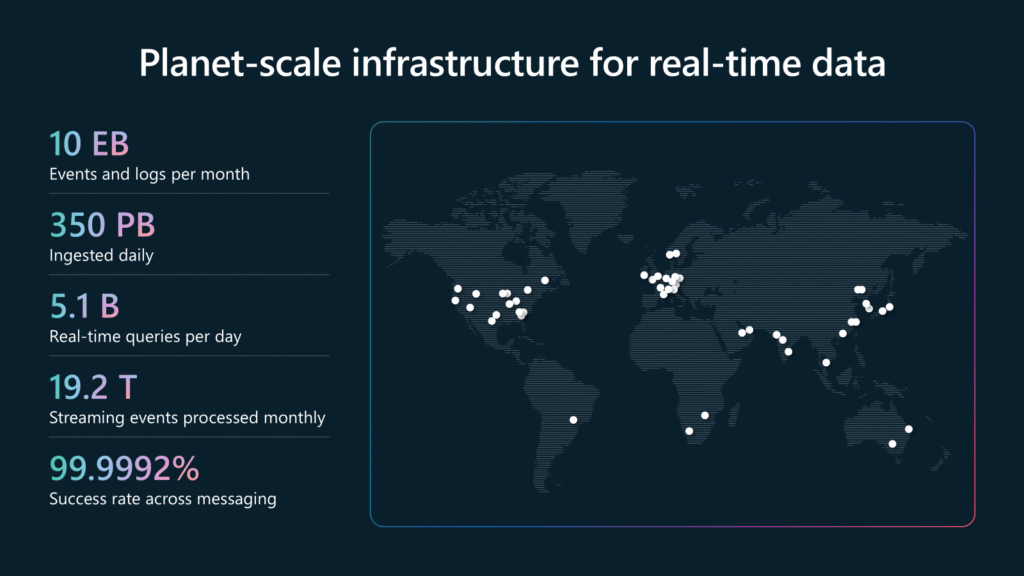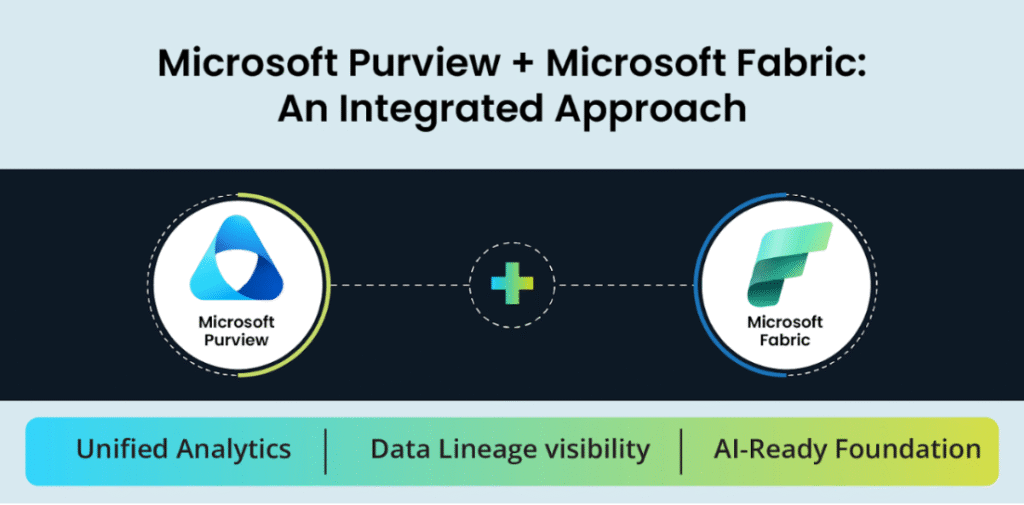Build 2025 — When Fabric Became the Foundation for Enterprise AI
Microsoft Build 2025 wasn’t just another developer conference — it was a strategic blueprint for the AI-driven enterprise.
Held in Seattle in May, this year’s Build drew thousands of data engineers, AI developers, and enterprise architects to explore one defining question:
“How do we make data ready for intelligence — not just analytics?”
From Satya Nadella’s keynote to deep-dive sessions led by Microsoft’s Fabric engineering team, the message was consistent and bold:
Fabric is no longer just about data unification — it’s about data organization for AI readiness.
With new capabilities spanning Graph in Fabric, real-time intelligence, open mirroring, and governance integration, Microsoft is signaling the next evolution of the data platform: from unified to intelligent.
“The future of AI will be decided not by who has the biggest model — but by who has the cleanest, most connected data.”
— Gaurav Agarwaal
Microsoft Fabric: From Data Platform to Intelligence Layer
Fabric has already unified data engineering, analytics, and governance within a single SaaS-delivered experience.
Now, it’s becoming the AI foundation layer — enabling organizations to reason over data that is dynamic, contextual, and trustworthy.
At Build 2025, Microsoft introduced capabilities that redefine Fabric’s role: connecting every data point, person, and process into an AI-ready operating fabric.
Fabric now doesn’t just help you see your data — it helps your AI understand it.
My Pick of Top Announcements: Turning Unified Data into Connected Intelligence
1. Graph in Fabric — Modeling Relationships at Enterprise Scale (Preview)
The most talked-about announcement from Build 2025 was Graph in Fabric — a first-party capability for modeling relationships natively inside Microsoft Fabric.
It allows enterprises to map interactions across people, products, and processes — providing a foundation for reasoning engines and agentic AI.
“If data is the body, relationships are the nervous system. Graph in Fabric gives AI the ability to see how everything connects.”
— Gaurav Agarwaal
 Technical Deep Dive
Technical Deep Dive
- Graph in Fabric introduces a node-edge schema directly in the OneLake environment.
- Integrates with KQL and Lakehouse queries for connected analytics.
- Supports Microsoft Graph connectors and Copilot extensibility, enabling graph queries from natural language.
- Use cases: supply-chain dependencies, customer-journey mapping, fraud correlation, and agentic AI reasoning.
- GA expected early 2026 with full Fabric SDK integration.
2. Real-Time Intelligence — Live Data for Live Decisions (GA)
Microsoft’s real-time intelligence updates to Fabric bring streaming analytics, event processing, and geospatial awareness into the same architecture as your historical data.
This eliminates the gap between operational signals and analytical models — unlocking AI that reacts, not just reports.
“AI without live data is hindsight at scale. Real-time intelligence turns every event into a decision trigger.”
— Gaurav Agarwaal




 Technical Deep Dive
Technical Deep Dive
- Native integration with Eventstream and Data Activator for instant processing.
- New Maps visualizations in Power BI visualize live geospatial data in dashboards.
- Support for event-driven pipelines that feed Copilots and LLMs directly.
- Built on Azure Stream Analytics, optimized for Fabric’s OneLake engine.
3. Fabric Mirroring — Interoperability Without Migration (Preview)
Data gravity has long been a blocker for modernization. Fabric Mirroring solves this by connecting to existing databases — like Azure SQL, Cosmos DB, and Snowflake — and reflecting them into Fabric in near real time.
No ETL, no duplication — just a mirror.
“Modernization shouldn’t mean migration. Fabric Mirroring lets your data live where it is — but work where it matters.”
— Gaurav Agarwaal
Technical Deep Dive
- Mirrors database tables into OneLake, preserving schema and updates.
- Works bi-directionally, keeping mirrored tables current within seconds.
- Supports security inheritance from Purview — ensuring labels and DLP policies travel with the mirrored data.
- Public preview expanding to non-Azure sources in early 2026.
4. Fabric + Purview — Governance as a Built-In Service
Governance continues to be Fabric’s differentiator.
At Build 2025, Microsoft announced deeper integration between Fabric and Microsoft Purview, bringing Data Loss Prevention (DLP), sensitivity labeling, and Data Security Posture Management directly into the Fabric experience.
“AI readiness isn’t just about having more data — it’s about having data you can defend.”
— Gaurav Agarwal
Technical Deep Dive
- Purview DLP now scans Fabric assets natively: Lakehouse, KQL, and Mirrored DBs.
- DSPM for AI monitors Copilot interactions within Fabric Studio.
- Observability integration allows lineage tracking from ingestion to AI prompts.
- New Trust Dashboard (Preview) provides a unified view of governance health across Fabric workspaces.
Unified Theme: From Data Unification to Organizational Intelligence
Taken together, these innovations mark a clear pivot in Microsoft’s strategy: Fabric is now the AI-readiness engine of the Microsoft Cloud.
It merges data activation, governance, and real-time context — giving enterprises the architecture to operationalize AI safely and at scale.
Fabric and Purview no longer operate in silos. They form a unified governance-and-intelligence continuum, where protection, lineage, and activation flow seamlessly through OneLake.
“Data used to power dashboards. Now it powers decisions — and those decisions must be trusted.”
— Gaurav Agarwaal
Product Roadmap: Where Microsoft Is Headed Next
- Graph GA (2026): expanding support for native vector search and knowledge reasoning.
- Cross-Cloud Fabric Connectors: interoperability with AWS S3 and Google BigQuery.
- AI-Integrated Pipelines: direct data feeds from Fabric to Copilot Studio and Azure AI Foundry.
- Unified Trust Framework: aligning Fabric, Purview, and Defender into one compliance and observability model.
- AI-Ready Workspace Templates: pre-built pipelines for finance, healthcare, and supply-chain AI scenarios.
What CXOs Should Do Next (Prescriptive)
- Audit Your AI Data Estate: Identify where your current pipelines stop short of connected, contextual, or governed data.
- Adopt Fabric Incrementally: Start with mirroring and governance integration — build AI-ready foundations without heavy migration.
- Prioritize Real-Time Readiness: Extend analytics to include event and streaming data for operational AI.
- Operationalize Trust: Establish a unified governance office spanning data, security, and AI strategy teams.
- Measure AI-Readiness KPIs: Track lineage completeness, sensitivity coverage, and real-time data availability as new success metrics.
Final Thoughts: Build 2025 and the Dawn of the Intelligent Data Platform
Build 2025 will be remembered as the moment when Microsoft moved Fabric beyond analytics — into the realm of organized intelligence.
It’s where data, governance, and AI finally meet in one operational layer.
For enterprises, this means that AI-readiness is no longer a data-science problem — it’s a platform strategy.
And Fabric is emerging as that platform.
“In the end, AI readiness is not about scale — it’s about structure.
Fabric gives every enterprise the blueprint to build intelligence with integrity.”
— Gaurav Agarwaal
Views: 2.2K

